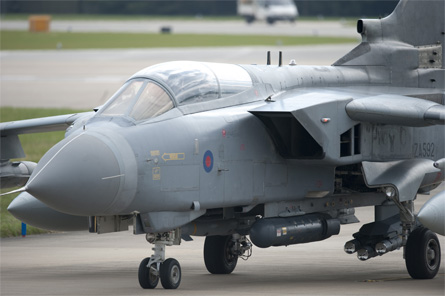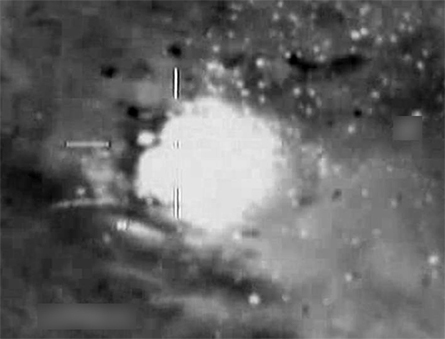NATO on 31 March assumed sole command of air operations over Libya, as the number of countries supporting the international action has increased steadily since hostilities against forces loyal to Col Muammar Gaddafi began less than two weeks earlier.
"The Alliance has the assets in place to conduct its tasks under Operation Unified Protector - the arms embargo, no-fly zone and actions to protect civilians and civilian centres," NATO says. "This is a very significant step, which proves NATO's capability to take decisive action," says secretary general Anders Fogh Rasmussen.
In addition to the early aircraft contributions made by Belgium, Canada, Denmark, France, Italy, Norway, Qatar, Spain, the UK and the USA, assets from the Netherlands and the United Arab Emirates are also now in place at bases in the Mediterranean region.
Six Lockheed Martin F-16s of the Royal Netherlands Air Force have been flown from Leeuwarden air base to Decimomannu on Sardinia, launching a commitment of up to three month with a total of 180 personnel. Four of the fighters will be ready for use at any one time, with a McDonnell Douglas KDC-10 tanker to also be available from 4 April.
Also now at Decimomannu are another six F-16s and six Dassault Mirage 2000-9s, which arrived from the UAE on 27 March. Their arrival follows that of six Qatar Emiri Air Force Mirage 2000-5s, the first of which made their debut sortie in support of the Libyan campaign from Souda Bay, Crete, two days earlier.
Four Italian air force Eurofighters and four navy Boeing AV-8B Harrier IIs also flew their first missions in support of the Libyan campaign on 29 March, respectively operating from Trapani and the aircraft carrier Garibaldi. The assets had previously been operating only as part of Italy's national air defence network.
 |
|---|
© Italian navy |
Transferring command of the UN-mandated action to protect Libyan civilians against attack by pro-Gaddafi forces to NATO comes as the US military attempts to scale down its role in the Odyssey Dawn intervention. This cost around $550 million between 19 and 28 March, the Department of Defense says.
Washington is still providing "80% of all air refuelling, almost 75% of aerial surveillance hours and 100% of electronic warfare missions", says US Navy Vice Adm William Gortney, director of the Joint Staff. US Air Force Fairchild A-10 ground-attack aircraft and Lockheed AC-130 gunships are also still in use against hostile forces and in striking ground infrastructure targets, the DoD adds.
France and the UK have spearheaded much of the other recent offensive operations.
Overnight on 23-24 March, France launched a 10-aircraft sortie to attack an air base 250km (135nm) south of the Libyan coast. The package included two air force Mirage 2000Ds and two Rafales from French bases, plus two navy Rafales operating from the aircraft carrier Charles de Gaulle. For the first time, its forces used MBDA Scalp-EG cruise missiles, identical to the Storm Shadow weapons already directed against Libyan targets from UK Royal Air Force Panavia Tornado GR4s.
 |
|---|
© EMA/French navy |
The French navy armed its Rafales with MBDA's SCALP-EG cruise missile |
In a separate action, a French air force Rafale destroyed a Libyan air force Soko G-2 Galeb trainer on the ground using a Sagem AASM air-to-surface weapon, with its attack launched after the aircraft had contravened the terms of the no-fly zone near Misrata.
RAF Tornado GR4s used their precision-guided weapons against multiple ground targets during a period of less than a week. Largely performed using MBDA dual-mode seeker-equipped Brimstone air-to-surface missiles, the strikes neutralised more than 30 main battle tanks, armoured fighting vehicles and artillery pieces, primarily near the towns of Ajdabiyah and Misrata.
 |
|---|
The Tornado GR4's Brimstone missiles (three shown to right of image) have been used to devastating effect against Libyan armoured vehicles (screen grab below from Litening targeting pod). Both images © Crown Copyright |
|
Operating from Gioia del Colle, Italy, the GR4 detachment also released more Storm Shadow missiles against ammunition stores being used by pro-Gaddafi forces.
Royal Danish Air Force F-16s also flew 26 missions by 26 March, attacking command centres, ammunition stores, surface-to-surface missile launch ramps, main battle tanks and mobile rocket launchers, the nation's defence ministry says.
Meanwhile, in a fresh boost to the NATO campaign, Partnership for Peace nation Sweden on 29 March secured parliamentary approval to deploy up to eight Saab Gripen fighters, a Lockheed KC-130H tanker and undisclosed reconnaissance assets to Sardinia or Sicily for a period of up to three months.
The aircraft and around 130 personnel are to be drawn from Stockholm's current force allocation to the Nordic Battle Group, the Swedish defence ministry says.
For more coverage about the Libyan crisis, visit our dedicated landing page
Source: Flight International




















